BenQ DesignVue PD3220U monitor review
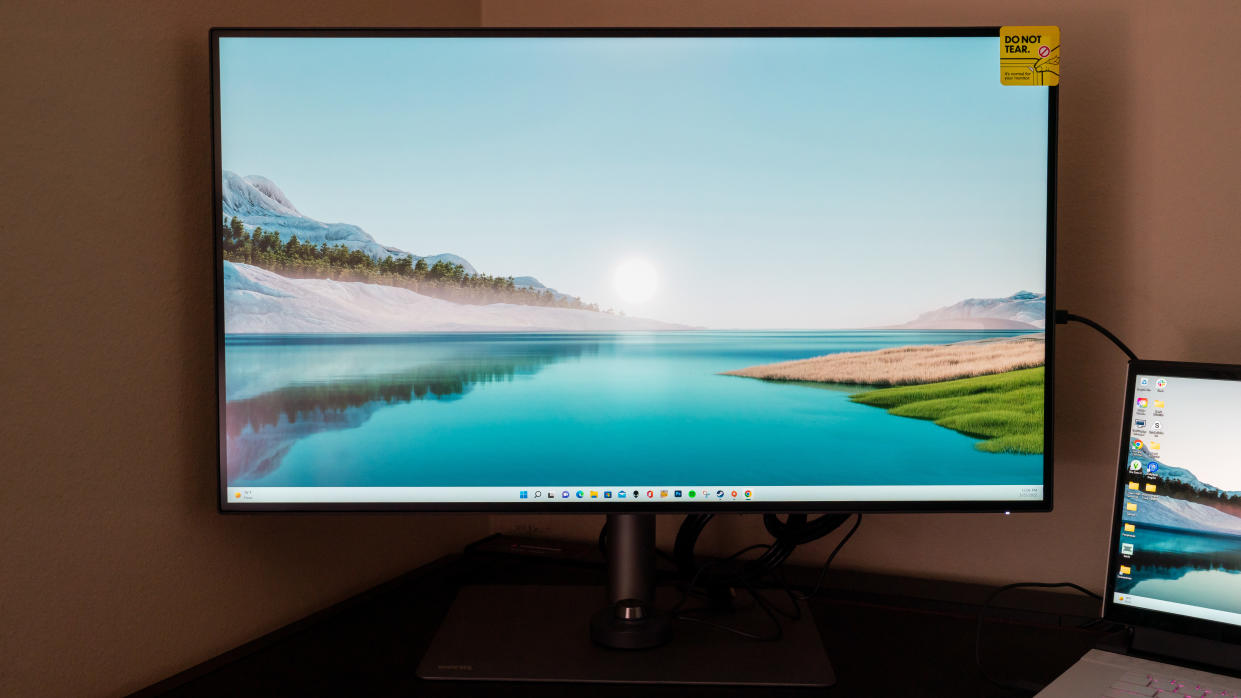
Our BenQ DesignVue PD3220U monitor review reveals a screen that hits quite a sweet spot. There are only a handful of truly impressive monitors out there, and unfortunately, most of them come at a very steep price. But, then there are screens like the BenQ PD3220U that tick all the right boxes, sacrificing only the not-so-vital ones to offer more approachable propositions to folks who aren’t willing to pay an overly hefty price of entry.
OK, so this pre-calibrated near-32-inch 4K display from BenQ isn’t exactly a budget option, but at $1,199 (£1,059, AU$2,199), it’s certainly a lot more affordable than monitors like the Eizo ColorEdge CG319X or the Apple Pro Display XDR. And it still comes with its share of strengths, including great out-of-the-box colour accuracy and colour coverage. It may have its share of faults as well, but they won't matter too much for graphic designers and photographers, as well as some video editors. Especially not for this price.
BenQ PD3220U monitor review: features
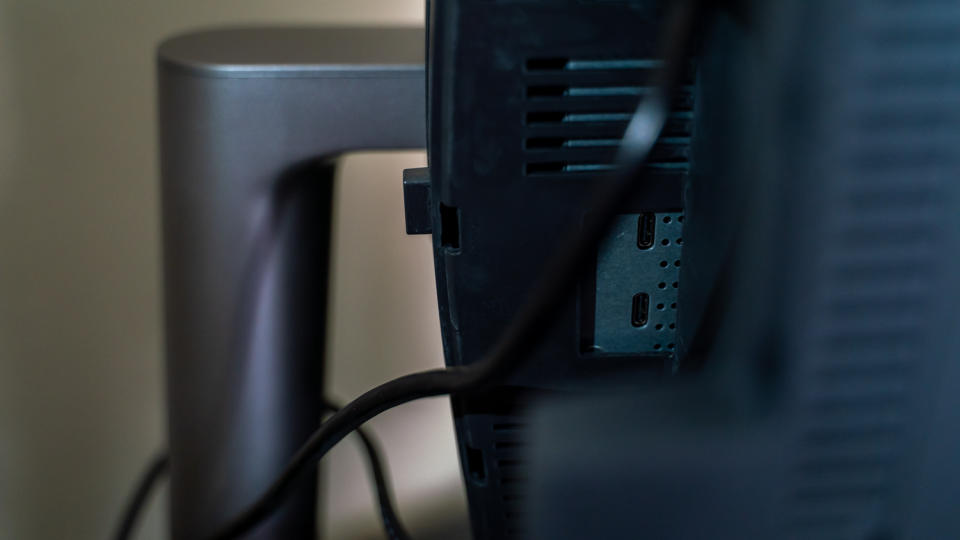
One of the BenQ PD3220U's best features is its Thunderbolt 3 connectivity. Instead of simply going with the USB-C option, BenQ went out of its way to make this a truly creator-oriented display with not just one but two Thunderbolt 3 ports that allow you to daisy-chain another monitor to your setup without using another one of your PC or laptop’s precious ports. And, one of these ports delivers 85W of power so you can also charge your device at the same time, minimizing the number of pesky cables on your setup.
But, that isn’t the only noteworthy feature. This 4K display’s feature set revolves around simplifying workflows, especially creative ones. Its picture-in-picture and picture-by-picture modes, for example, not only allow you to display visuals from two inputs but tweak them as well for your comfort. This should, to an extent, allow you to focus more on the creative process.
BenQ PD3220U monitor specs
Screen size: 31.5-inch | Aspect ratio: 16:9 | Resolution: 3840 x 2160 | Panel technology: IPS with white LED backlighting| Brightness: 250cd/m2 | Contrast ratio: 1,000:1 | Supported colours: 1.07 billion | Colour space coverage: 100% Rec.709, 100% sRGB, 95% P3 | Viewing angles: 178/178 degrees (horizontal/vertical) | Connectivity: 2x HDMI 2.0, 1x DisplayPort 1.2, 2x Thunderbolt 3, 1x USB Type C, 1x Mini Display Port 1.2, 1x USB B, 1x 3.5in headphone/mic jack
Meanwhile, the included Hockey Puck G2, a disk-shaped wired remote control, should allow you easier access to the on-screen menus and switch colour modes on the fly. Anyone who tells you that it isn’t necessary because the monitor itself already has OSD buttons built-in hasn’t used those buttons enough to realize that constantly reaching over to make adjustments can be a pain.
Speaking of colour modes, there are 12 presets on hand, most of which are design- and editing-focused. Among these presets creative pros will appreciate are DCI-P3, Rec.709, Adobe RGB, CAD/CAM, and HDR. Just bear in mind that this display doesn’t have true HDR capabilities; only HDR10 content support.
The display also has built-in speakers, but these are very limited and nothing to write home about. If you need a powerful set of pipes on your monitor, look elsewhere, though you can always invest in an affordable pair of bookshelf speakers.
BenQ PD3220U monitor review: build and handling
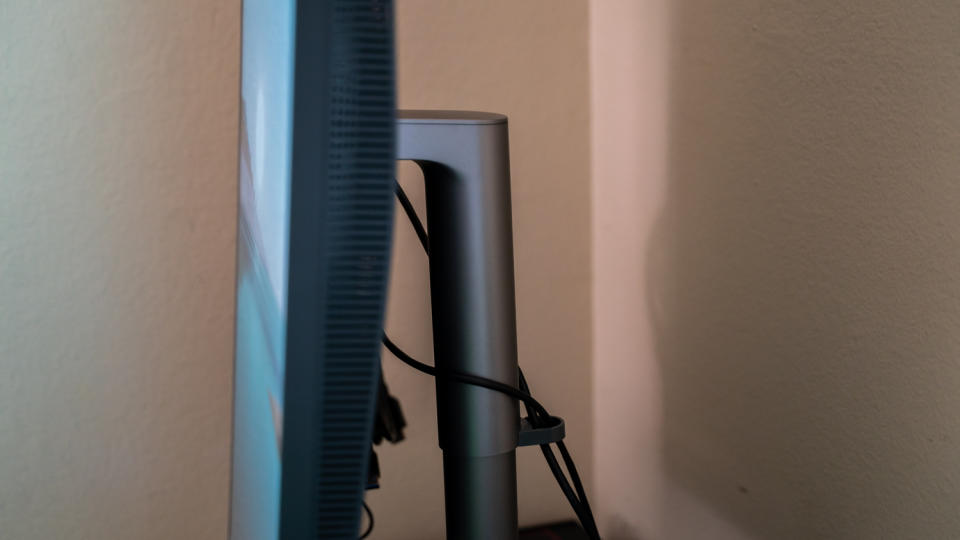
The BenQ PD3220U looks every bit like a professional’s display, touting a sleek cylindrical stand, a wide yet thin, flat base, and super-thin bezels. Both the stand and the base feel robust and have a silver-grey finish, although the back of the display is made of the usual solid black plastic you’ll find on most affordable displays.
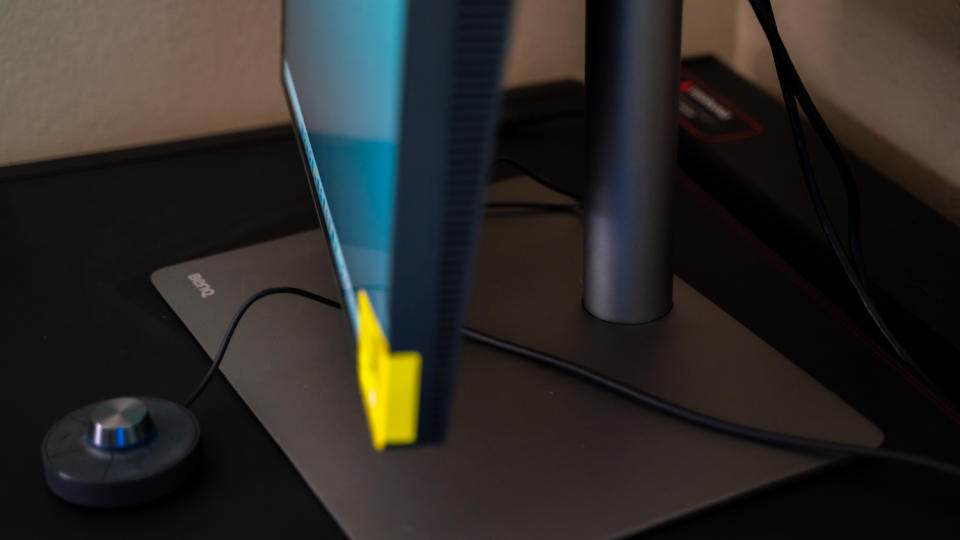
We’re not exactly a fan of BenQ’s stand and base design as it looks a bit too basic, but we can see how that would be appealing to others. The thing that might displease users is the wobble. The display has a lot of wobble to it, which might have something to do with how it’s connected to the articulating stand. We certainly appreciate the fact that the stand lets you pivot up to 90 degrees, tilt up to -5 degrees down and 20 degrees up, swivel up to 30 degrees in both directions, and adjust the height up to 150mm. However, a physically stable panel shouldn’t be sacrificed in order to have a highly articulating stand. BenQ could have designed this part better.

We do appreciate the portrait mode, however. And, the monitor automatically adjusts the display orientation as soon as it’s pivoted 90 degrees, which is neat as some monitors don’t allow that.
Plus, the rest of the monitor feels solid. And, we do appreciate the abundance of ports. Besides the two Thunderbolt 3 we mentioned, there are two HDMI 2.0 ports, one DisplayPort, a 3.5mm audio jack, one USB Type B upstream, and three USB 3.0 for your peripherals. Alongside the BenQ PD3220U’s KVM functionality, you’ll never want for ports again.

Finally, the Hockey Puck G2, which you have to plug into the monitor via the mini DisplayPort, feels robust and premium-made. The buttons are easy and satisfying to press while the dial in the middle turns beautifully and delivers tactile feedback so you know that you’re actually turning it.
BenQ PD3220U monitor review: performance
At the heart of the BenQ PD3220U is that near-32-inch 4K panel, which is the sweet spot for 3840 x 2160 resolution viewing. This display is big enough for you to enjoy a lot of space for a smoother, more seamless workflow, but not so big that it’s towering over everything else and you have to squint to see the texts and images on the screen. That 140 PPI allows this display to deliver sharp, highly-detailed visuals while offering a comfortable viewing experience.
But, there’s more to the BenQ PD3220U’s appeal than that. Factory-calibrated for accuracy, it already delivers solid colour accuracy out of the box. And, while photographers who need high Adobe RGB coverage for printing might be disappointed, the 100% Rec.709 and 100% sRGB – and even 95% DCI-P3 – colour gamuts should satisfy its target audience as well as other creative professionals. The viewing angles are faultless as well, as is that anti-glare coating, which should eliminate the need for a hood.
We only wish the contrast ratio was better, there’s proper HDR, and the peak brightness is higher. However, a 1,000:1 contrast ratio and 300-nit brightness are still typical of most displays, so it’s hard to fault it for those. And, unless you work with HDR content, proper HDR isn’t a requirement in most creative workflows.
To get a much more objective view of the monitor’s colour consistency, screen brightness, and colour space coverage, we put our Datacolor Spyder X Elite colorimeter (see our guide to the best monitor calibrator tools) to use. These are the results we got in our tests.
Colour gamut
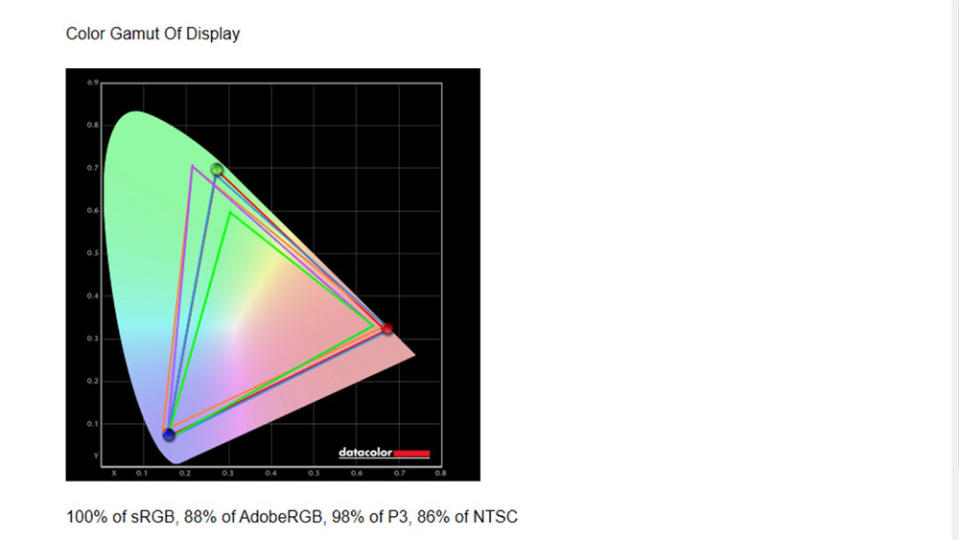
The BenQ PD3220U doesn’t disappoint in terms of colour coverage. In fact, while it proved to meet BenQ’s 100% sRGB rating, it also exceeded expectations in the DCI-P3 colour space, delivering a colour gamut of 98% DCI-P3 during our testing. That’s excellent news for cinematic video editors that work in that colour space.
Colour accuracy

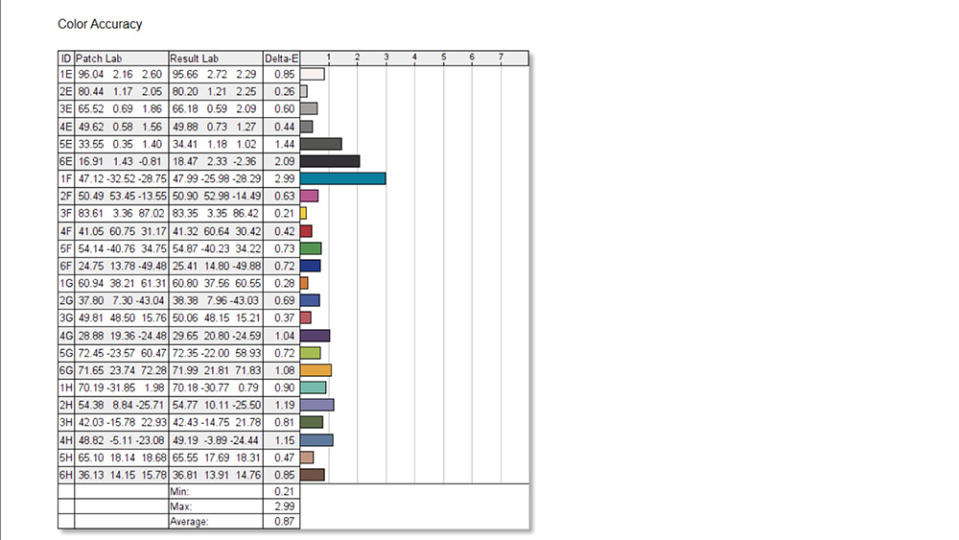
BenQ PD3220U colour accuracy pre- and post-calibration
Because the screen's factory-calibrated for accuracy, the impressive Delta-E results we yielded during testing should be no surprise. Although the colorimeter did yield a maximum of over 2, we also recorded an average accuracy of 0.92, which dropped to 0.87 after another calibration with the SpyderX app. There are certainly more colour accurate 4K displays out there, but they’re likely to cost more or need calibration before use.
Brightness and contrast
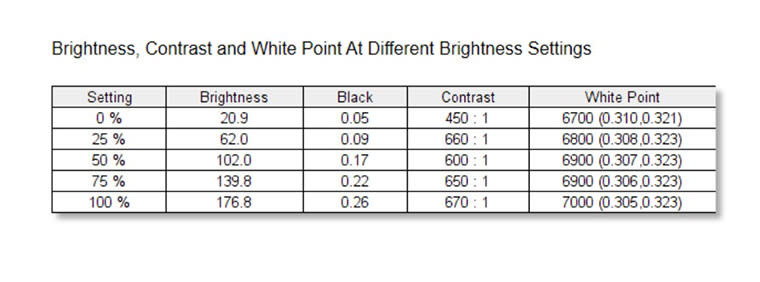
The BenQ reports a peak brightness of 250 nits and a contrast ratio of 1,000:1. However, the results we got during testing were a bit more disappointing, with the monitor’s brightness at only 176.8cd/m2 at 100%. Meanwhile, its contrast topped at 670:1.
Screen uniformity
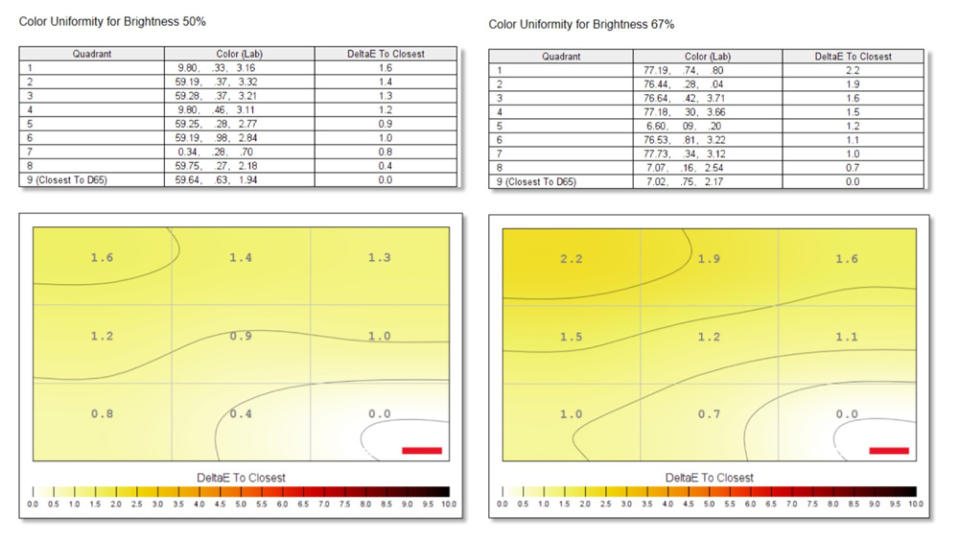
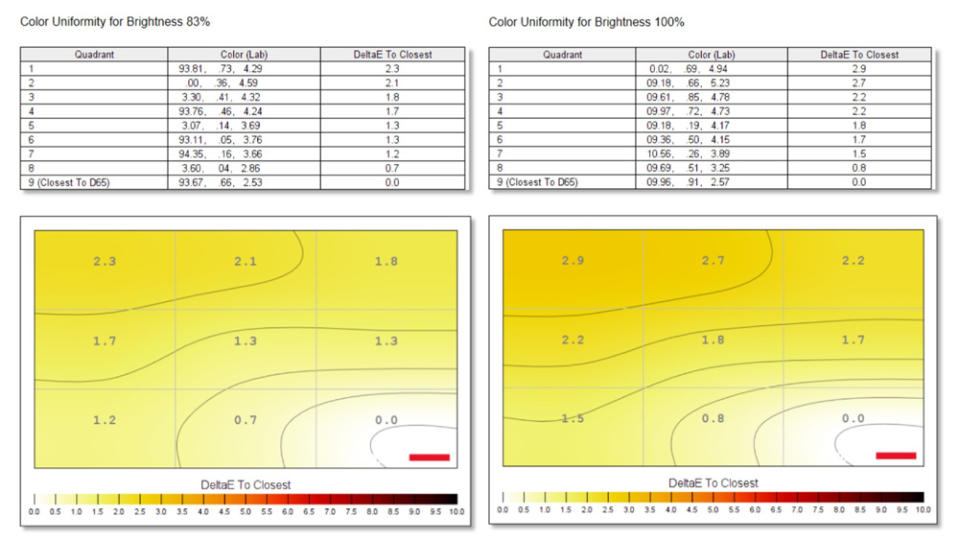
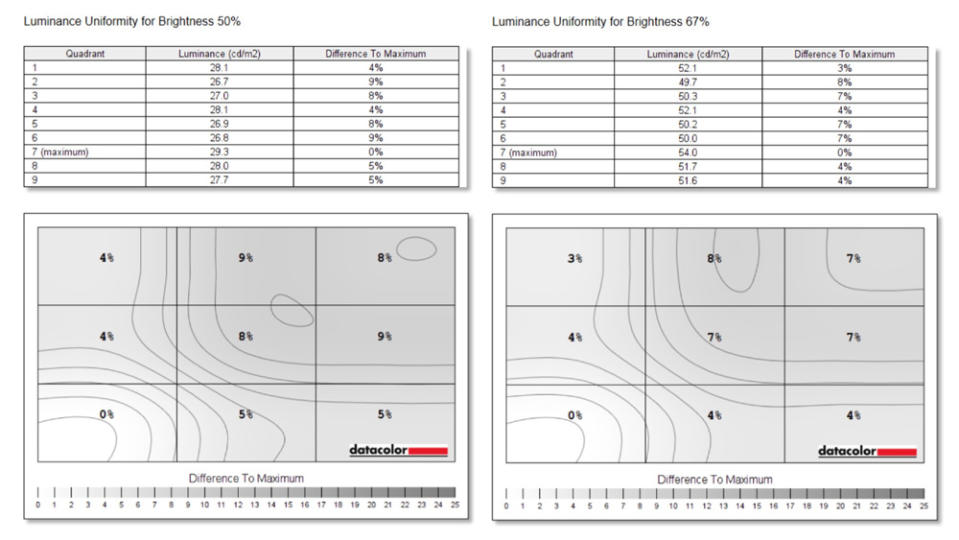
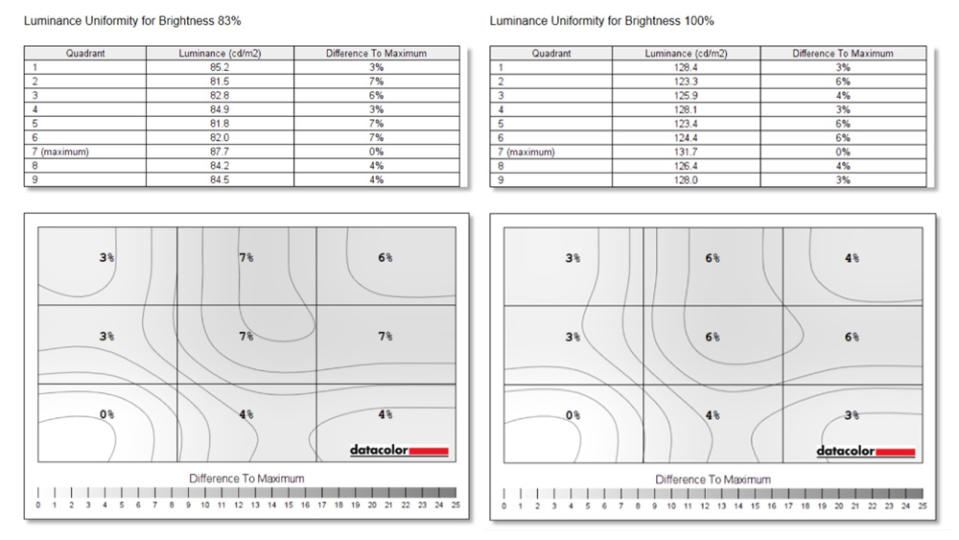
Happily, the BenQ PD3220U’s colour and luminance uniformity are impressive. With its brightness set to 100%, we recorded just a slight deviation in colour uniformity between any two segments and only a 6% luminance variation between the brightest and dimmest regions. The colour uniformity also improved when we set the brightness at 67%.
BenQ PD3220U monitor review: verdict
While many design- and editing-focused monitors out there will burn a massive hole in your pocket, the BenQ PD3220U keeps things at a more accessible level, offering graphic designers and even some photographers and video editors a more affordable proposition.
In fact, I'd say that this designer display has among the best price-to-performance ratios out there, giving you great colour accuracy out of the box, good colour coverage, a nice feature set that simplifies your workflow and impressive screen uniformity. And you get that 4K on a 32-inch panel sweet spot for a whole lot less than the competition. So, while it’s not exactly every creator’s dream monitor, it’s one of the best value monitors for creative professionals.
Read more:

